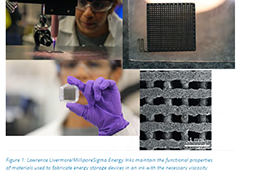
Credit: Tsinghua University
On January 12, 2019, the world’s largest concrete 3D printed pedestrian bridge was completed in the Wisdom Bay Industrial Park, Baoshan District, Shanghai. The project was designed and developed by the team of Professor Xu Weiguo from Tsinghua University (School of Architecture) – Zoina Land Joint Research Center for Digital Architecture, and was jointly built with Shanghai Wisdom Bay Investment Management Company.
The length of the pedestrian bridge is 26.3 meters and the width is 3.6 meters. The bridge’s structure is inspired by the ancient Anji Bridge in Zhaoxian, China. It adopts the structure of a single arch to bear the load, and the distance between the abutments is 14.4 meters. Before the bridge’s printing process, a 1:4 scale physical model was built to carry out the structure failure testing, which proved the bridge’s strength can meet the load requirements of holding pedestrians crowding over the whole bridge.
The printing of the bridge uses the 3D printing concrete system independently developed by Professor Xu Weiguo’s team. The system is integrated with innovative technologies such as digital architectural design, printing path generation, operation control system, printing tool, concrete material, etc. It has the characteristics of high printing efficiency, high molding precision and high constancy in prolonged work. There are three main innovation points of the system, taking the leading position in this field internationally. The first is the printing tool of the robot arm, which avoids plugging in extrusion process and collapse during the material’s layer stacking; For the print path generation and operating system, it integrates form design, print path generation, material pumping, printing tool’s movement, robot arm movement and other systems to work together; the third is a unique printing material formula, which has reasonable performance and stable rheology.
All of the concrete components of this bridge are printed with two robotic arm 3D printing systems in 450 hours. Compared with conventional bridge of similar size, its cost is only two-thirds of the latter one; This is mainly because that the printing and construction of the bridge’s main body did not use any templates or reinforcing bars, saving costs significantly.
The design of the pedestrian bridge adopts three-dimensional solid modeling. The bridge handrails are shaped like flowing ribbons on the arch, forming a light and elegant posture lying on the pond of Shanghai Wisdom Bay. The pavements of the bridge are generated from the form of brain corals, and white pebbles are filled in the voids of the pattern.
The pedestrian bridge consists of three parts: the arch structure, the handrails and the pavements. The bridge structure contains 44 hollow-out 3D printed concrete units in the size of 0.9*0.9*1.6 meters; the handrails and pavements are also divided into 68 and 64 units for printing respectively. The printing materials of these components are all composite materials composed of polyethylene fiber concrete with various admixtures. After repeated ratio test and printing experiments, it has controllable rheology to meet printing requirements; the pressure resistance strength of the new concrete material reaches 65 MPa and the flexural strength reaches 15MPa.
The bridge is embedded with real-time monitoring system, including vibrating wire stress sensors and high-precision strain monitoring system, which can collect the force and deformation data of the bridge in real time. They will have practical effect on tracking the performance of new concrete materials and the structural mechanical properties of printing components.
With the disappearance of China’s demographic dividend, the demand for labor in construction projects will be deficient increasingly. Intelligent construction will be an important channel to solve this problem. It will promote the transformation and upgrading of China’s construction industry. As an important part of intelligent construction, 3D printing will play an important role in the intelligentize development of engineering construction.
Although there are many bottlenecks that need to be solved in 3D printing concrete construction, the competition in research and practical application of this field is becoming increasingly fierce. There are quite a few research institutions and construction companies in the world that have been committed to technical research in this area, but these technologies have not been used in actual engineering. The completion of the pedestrian bridge marks a gratifying step for this technology from research and development to practical engineering applications. At the same time, it marks the entry of China’s 3D concrete printing and construction technology into the world’s advanced level.




